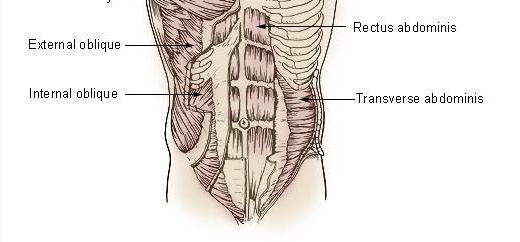IMPROVE MY GAME
Articles
Training The Queen Of The Swing
One of the most common terms in fitness these days is the reference to the “core” and golf specific fitness training is no different. If the glutes are the King of the Swing, then the core is the Queen. With regards to golf, I consider the core to be the "glue" that holds the swing together and transmits force from the lower body to the upper body. Your core helps you rotate your torso and, most importantly, stabilize your lower back, protecting your lumbar region from injury.
At TPI, we advocate core training for golfers of all ages, handicaps and walks of life. If your "core training" work only consists of countless crunches, it's time to rethink things.
In this article, I'll offer a few core training suggestions that focus on one of those main muscle groups of the core: the abdominals, specially the:
- Rectus Abdominus
- External an Internal Obliques
- Transversus Abdominus

All three of these abdominal muscle groups play a vital role in the golf swing. Creating a neural pathway, as well as a foundation of strength and stability within all three will help to create an efficient core unit.
These are just a sampling of moves, but ones that will help the brain and the muscle starting communicating with one another (oftentimes a major roadblock for the golfing population). In essence we will be learning “muscle memory." We will teach the muscles how to fire and then remember so that we can call on them again and again for the same purpose. This in turn will help to limit both our misses on the golf course and prevent unneeded injuries and trauma.
ABDOMINAL BRACING
Basically, abdominal bracing is a motor learning drill aimed at teaching you how to activate all three layers of muscles, creating 360° of stiffness around the spine. Perfecting this contraction in a wide variety of positions (supine, prone, standing, kneeling, quadruped etc...) can help you become more efficient during the golf swing. Here's a short video explaining abdominal bracing.
PLANK MATRIX
Planks are an extremely common core exercise, but I like to add a few variations to enhance the benefit to your golf game. The Plank Matrix is basically a series of 3-point planks that will require your core to stabilize your torso in an unstable environment. This ability is often overlooked by athletes, but is especially critical for golfers. We often associate core strength with the ability to initiate powerful rotation, but the ability to resist rotation is just as important. As Physical Therapists James Porterfield and Carl DeRosa, authors of Mechanical Low Back Pain, put it: "Rather than considering the abdominals as flexors and rotators of the trunk - for which they certainly have the capacity - their function might be better viewed as antirotators and antilateral flexors of the trunk."
For golfers, this ability to maintain posture not only benefits performance, but also can greatly reduce the incidence of injury. Earn the right to rotate, we say.
HORIZONTAL CHOPS
 These exercises focus on the Internal and External Obliques, which help to rotate both the torso and the hips in the golf swing. Learning how to utilize this muscle group will promote a more rotary swing as compared to a lateral (sway, slide) or a vertical (loss of posture, over the top) movement pattern. There are also many anti-rotation and anti-flexion properties to this exercise. They can be performed in a standing or sitting position.
These exercises focus on the Internal and External Obliques, which help to rotate both the torso and the hips in the golf swing. Learning how to utilize this muscle group will promote a more rotary swing as compared to a lateral (sway, slide) or a vertical (loss of posture, over the top) movement pattern. There are also many anti-rotation and anti-flexion properties to this exercise. They can be performed in a standing or sitting position.
TORSO BACKSWING
This drill is important in that it will teach you how to stabilize one section of the body (hips/pelvis/lower body), while the other section (torso) rotates. It doesn't require a standard number of sets and reps, rather it is a drill that over time will yield a greater understanding of how to use the body more efficiently. This is an example of a core exercise that will build positive muscle memory for your golf swing.
HIP TWISTER
Hip Twisters are similar to the Torso Backswing, but flipped. Hip Twisters teach you how to mobilize one section of the body (hips/pelvis/lower body), while the other section (torso) remains stable. We often refer to this as the ability to disassociate upper body from lower body, a key skill for proper sequencing in the golf swing. We teach golf professionals to test for this ability in the Pelvic Rotation Test in our Level 1 screen.
These are just five drills and exercises to help create a more functional core. In addition to improving your potential power and stability, you'll notice that your ability to separate the upper body from the lower body will improve. As with any fitness pursuit, don't mistake improving how you look with how you perform. When training for golf (or any sport), function is everything.